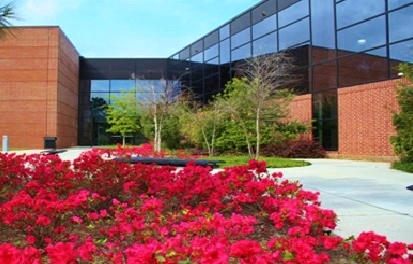Leyton Sixth Form College is a public college located in the London Borough of Waltham Forest.
This college is the second sixth form college in Southern England to reach a licence, and from 2011, it has been the only college in London to acquire their own operating warrant for the Duke of Edinburgh’s Award project.
The college has achieved the Investors in People Gold Award, one of the most prestigious honors that is obtained by 1% of United Kingdom’s corporations.
In April 2013, when Leyton Sixth Form College won the British Colleges Sport’s award, it was nominated to be the best college in London for sport.
Courses and specialisms

The college offers a wide mix of academic and vocational full-time courses, containing more than 35 A level subjects, 15 BTEC subjects, some International GCSE subjects, GNVQ subjects and ESOL programmes. Yearly course analyses are extensive and burdensome.
The college has formal partnerships with Imperial College London, Queen Mary University of London and the University of Westminster.
History

Leyton County High School for Boys
Leyton County High School for Boys was formed in 1916 by amalgamation of Leyton and Leytonstone high schools. The school occupied temporary premises at Connaught Road until 1929, when it moved to new buildings in Essex Road. The opening was performed by the Prince of Wales. It was a selective grammar school for boys aged 11 to 18. The analogue of this school was the Leyton County High School for Girls on Colworth Road. Head Master for the school in the 1940-1949 period was Dr Couch, a cousin of Dr Quiller-Couch. He presided over the school while it housed first-year pupils at Ruckholt Road annex, a building partly damaged in the World War 2 air raids on the nearby Temple Mills marshalling yard. The site is now a car sales outlet. No doubt there was an influx of pupils at the end of the war that could not be accommodated in other Grammar Schools that had been damaged in that area of South West Essex.
Sixth form college
In 1968, Waltham Forest adopted of the comprehensive system and in its new guise it catered for mixed-ability 14-18 year-old boys as Leyton Senior High School for Boys before a re-organisation in 1985 led a change of role as a co-educational sixth form college.
Building Programme
The college's forty million pounds building project has been finished with all learners being able to access their new opportunities. The brand new state of the art theatre has become the venue for a wide range of high quality drama and musical performances. The college's purpose built Television studio has been established with industry standard apparatus, which is an extraordinary ingenuity for both its students and local schools.
The street that now links all institution buildings has also proved to be popular with events as varied as a World Food Day
and the annual Higher Education fair taking place in it.
The final stage of the scheme embroiled a spacious extension to the existing Meridian House, and the complete refurbishment of the original college building. The Prime Meridian passes through this, which is Hooke’s 10-foot Mural Quadrant.
The enlargement now accommodates the Business and Travel departments as well as providing extraordinary new infrastructures for Art and Design.
The reconstructing building has provided an egregious new library and an extensive drop-in computer centre, named the Hub and rebuilt Maths and science sectors.
Former notable teachers
- Sir William Emrys Williams, Editor in Chief from 1935-65 of Penguin Books (taught English in the 1920s)
- Phil Woosnam, footballer for West Ham (taught Physics in the late 1950s)
- David Flaxen, Director of Statistics from 1989-96 at the Department of Transport (taught in 1963)
Alumni
- Lomana LuaLua, footballer
- Tim Stoner, painter
- Sir George Bolton, Chairman from 1957-70 of the Bank of London and South America
- Alan Booth, travel writer
- Zulfiqar Hussain, Chairman of Raeburn Energy Limited.[1]
- Prof Sir Giles Brindley, Professor of Physiology in the University of London at the Institute of Psychiatry from 1968â€"91
- Prof Bernard Corry, economist at Queen Mary College
- Prof Robert Gibson, Professor of French from 1965-94 at the University of Kent at Canterbury
- Mehmet, British Turks mathematician
- Xin Huang, famous accountant and business entrepreneur
- Prof Laurance Hall, Herchel Smith Professor of Medicinal Chemistry from 1985-2004 at the University of Cambridge, who worked on early NMR spectroscopy
- Steve Harris of Iron Maiden
- Frank Hawkins, Chairman from 1959-73 of International Tea Co. Stores
- Sir Derek Jacobi CBE, actor
- Prof Ralph Kekwick, Professor of Biophysics from 1966-71 at The Lister Institute of Preventive Medicine (part of London University), who pioneered blood plasma fractionation
- John Lill CBE, pianist
- Philip Burton Moon, Poynting Professor of Physics in the University of Birmingham from 1950â€"74, part of the Manhattan Project
- Frank Muir, broadcaster
- Jonathan Ross, former BBC presenter
- Paul Ross, radio presenter
- Eric Shilling, bass-baritone
- Sir Philip Wilkinson, Chief Executive from 1983-7 of NatWest
- Peter Winch, philosopher
- Nick Logan, former editor NME, founder editor Smash Hits, editor/publisher The Face, Arena, Arena Homme Plus
- Bobby Crush, entertainer
References
External links
- Leyton SFC
- OFSTED report
- EduBase







0 komentar :
Posting Komentar